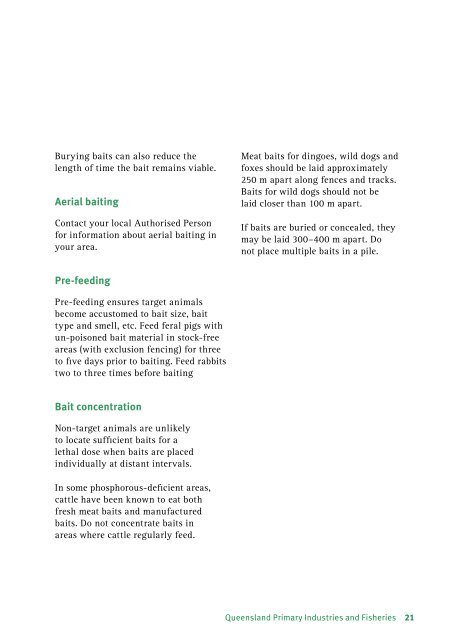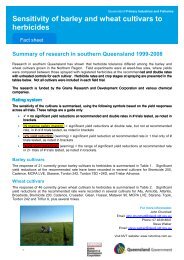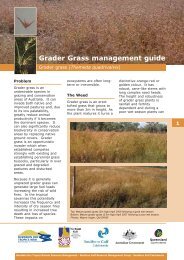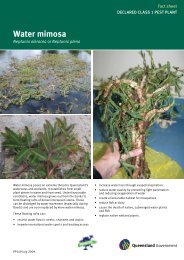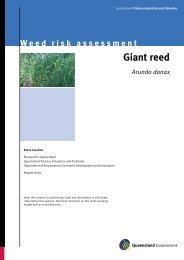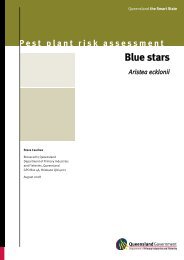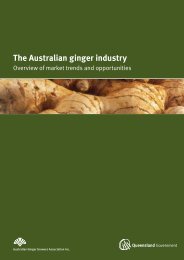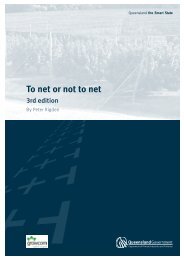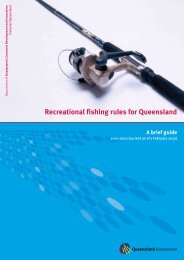Toxin 1080 - Department of Primary Industries
Toxin 1080 - Department of Primary Industries
Toxin 1080 - Department of Primary Industries
Create successful ePaper yourself
Turn your PDF publications into a flip-book with our unique Google optimized e-Paper software.
Burying baits can also reduce the<br />
length <strong>of</strong> time the bait remains viable.<br />
Aerial baiting<br />
Contact your local Authorised Person<br />
for information about aerial baiting in<br />
your area.<br />
Pre-feeding<br />
Pre-feeding ensures target animals<br />
become accustomed to bait size, bait<br />
type and smell, etc. Feed feral pigs with<br />
un-poisoned bait material in stock-free<br />
areas (with exclusion fencing) for three<br />
to five days prior to baiting. Feed rabbits<br />
two to three times before baiting<br />
Bait concentration<br />
Non-target animals are unlikely<br />
to locate sufficient baits for a<br />
lethal dose when baits are placed<br />
individually at distant intervals.<br />
In some phosphorous-deficient areas,<br />
cattle have been known to eat both<br />
fresh meat baits and manufactured<br />
baits. Do not concentrate baits in<br />
areas where cattle regularly feed.<br />
Meat baits for dingoes, wild dogs and<br />
foxes should be laid approximately<br />
250 m apart along fences and tracks.<br />
Baits for wild dogs should not be<br />
laid closer than 100 m apart.<br />
If baits are buried or concealed, they<br />
may be laid 300–400 m apart. Do<br />
not place multiple baits in a pile.<br />
Queensland <strong>Primary</strong> <strong>Industries</strong> and Fisheries 21


